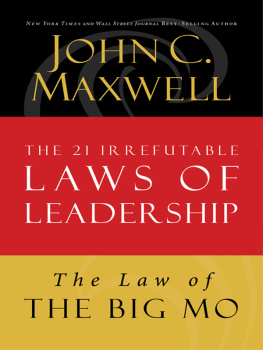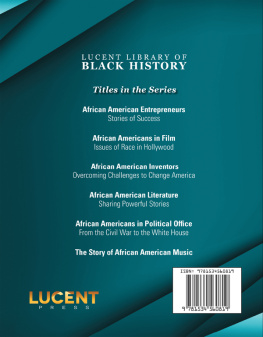Standing and Delivering
What the Movie Didnt Tell
Henry Gradillas and Jerry Jesness
Foreword by Jaime Escalante

Published by Rowman & Littlefield Education
A division of Rowman & Littlefield Publishers, Inc.
A wholly owned subsidiary of The Rowman & Littlefield Publishing Group, Inc.
4501 Forbes Boulevard, Suite 200, Lanham, Maryland 20706
http://www.rowmaneducation.com
Estover Road, Plymouth PL6 7PY, United Kingdom
Copyright 2010 by Henry Gradillas and Jerry Jesness
All rights reserved. No part of this book may be reproduced in any form or by any electronic or mechanical means, including information storage and retrieval systems, without written permission from the publisher, except by a reviewer who may quote passages in a review.
British Library Cataloguing in Publication Information Available
Library of Congress Cataloging-in-Publication Data
Gradillas, Henry, 1934
Standing and delivering : what the movie didnt tell / Henry Gradillas and Jerry Jesness.
p. cm.
ISBN 978-1-60709-942-0 (cloth : alk. paper) ISBN 978-1-60709-943-7
(pbk. : alk. paper) ISBN 978-1-60709-944-4 (electronic)
1. Educational changeUnited States. 2. James A. Garfield High School (Los Angeles, Calif.) 3. Stand and deliver. I. Jesness, Jerry. II. Title.
LA217.2.G725 2010
371.2'07dc22
2010025137
 The paper used in this publication meets the minimum requirements of American National Standard for Information SciencesPermanence of Paper for Printed Library Materials, ANSI/NISO Z39.48-1992.
The paper used in this publication meets the minimum requirements of American National Standard for Information SciencesPermanence of Paper for Printed Library Materials, ANSI/NISO Z39.48-1992.
Printed in the United States of America
Dedicated to Jaime Escalante
and the students and faculty
of Garfield High School
Contents
Foreword
If some colleagues called the eighties the decade of the dynasty of Garfield High School, they were not mistaken. To date, no school or school district has duplicated the success and the academic fame that Garfield High School enjoyed in that decade. Year after year the number of students that took and passed the Advanced Placement (AP) calculus exams grew progressively and impressively. As time passed, AP participation increased in other subjects as well, so the number of Garfield High School students participating in AP classes and taking AP examinations soon became larger than those of almost every other school in the country.
In the early 1970s Garfield High School was in danger of losing its accreditation. It was then that I met Henry Gradillas, at that time a Garfield science teacher. In 1975 all of the higher-level administrators were removed by order of the California Department of Education. Henry was appointed dean of boys, which made him part of what the Garfield faculty called the accreditation team. I received a lot of help from Henry with the establishment of my math enrichment program. In 1977, Henry left us when he was promoted to assistant principal of a nearby middle school.
In 1980 I was behind the effort to collect signatures from parents and teachers of Garfield High School students for a petition to make Henry the principal there. The Los Angeles Unified School District (LAUSD) granted our petition and promoted Henry, who at the time was the principal of a small LAUSD alternative school, to principal of our school. Henry and I again began working together, as we continued to do for the next six years.
I felt confident about reaching success teaching at Garfield. Henry certainly understood the needs and obligations of an administration that desired to put Garfield High School on the map. In order to reach this goal, Henry gradually eliminated nonessential classes, or Mickey Mouse classes as I used to call them, in which students earned credits for studying subjects like consumer math, high school science, magic circles, student services, arts, and plastics. He replaced them with academic classes: algebra, physics, chemistry, and reading/writing, classes that he considered important for students to take in order to prepare themselves for college or a university.
Perhaps some readers of this book will conclude that my praise for Henry is exaggerated or extreme. It is not. Henry Gradillas always backed and worked with me and with every other Garfield teacher who was truly dedicated to teaching, and he was always ready to assist the student who had the ganas to succeed. Gradillas also provided orientation to parents to help them understand their responsibilities. He laid the groundwork that enabled administrators, counselors, and teachers to work together in order to make Garfield High School a school with a future.
Today we behold the products of Garfield High Schools dynasty: professionals of prestige in various fields, engineering, medicine, and education to name a few. Without Henrys participation as principal, Garfield High School would never have yielded the success that it did. Henry was the right person in the right job at the right time, and he truly deserves a lot of credit for what took place under his watch at Garfield High School in East Los Angeles.
Jaime Escalante,
Garfield High School calculus teacher
Preface
In 2000 I had the good fortune to interview Jaime Escalante, the inner-city calculus teacher whose students phenomenal success with the Advanced Placement calculus exam made him the subject of the film Stand and Deliver. At the beginning of the interview, I asked Escalante the secret of his success. His first words were, Our principal, Henry Gradillas, gave us one hundred percent.
As Gradillas freely admits, Escalantes calculus program was entirely Escalantes own. Escalante set it up, taught many of the classes, chose and helped train the teachers who taught other calculus classes and the feeder classes that led to calculus, established the East Los Angeles College summer program for Garfield students, and convinced private foundations to foot many of the bills. Nevertheless, as Escalante freely admits, Gradillass leadership created an environment in which quality educational programs like Escalantes could flourish.
Statistics bear this out. Escalantes program peaked in 1987, Gradillass last year at Garfield, with eighty-five students scoring 3 or higher on the AP calculus exam. Within three years of Gradillass departure, Escalante would leave Garfield in frustration. A year later, Angel Villavicencio, the Escalante acolyte who took over Garfields AP calculus classes, would follow him out the door. Three years after that, Garfields AP calculus program had become a mere shadow of its former self. By 1996, the number of Garfield students who had scored 3 or higher on the AP calculus exam had dwindled to eleven.
Escalantes success was not the only star in Principal Gradillass crown. When he began as principal, the average reading level of Garfields entering sophomores was 5.2, equivalent to the reading level of an average student in the second month of fifth grade. Several semesters after Gradillas established a reading lab and required all students who read at least three grades below level to take additional remedial English and reading classes, scores improved dramatically. By 1986 the average Garfield senior read at a tenth-grade level. While this was still short of the national average, five years of progress in three years with a population that had made less than average progress in elementary and middle school is impressive.
Under his watch, algebra became a requirement for all Garfield students. The number of English as a second language (ESL) students was reduced by more than half after Garfield redesigned the ESL program to help students master English within two years. The number of vocational courses offered at Garfield dropped by more than half after non-state-of-the-art classes were eliminated, and the number of academic courses increased substantially. The number of sections of chemistry offered increased from only one in 1982 to sixteen in 1986. The dropout rate decreased from 51 percent to 19 percent.












 The paper used in this publication meets the minimum requirements of American National Standard for Information SciencesPermanence of Paper for Printed Library Materials, ANSI/NISO Z39.48-1992.
The paper used in this publication meets the minimum requirements of American National Standard for Information SciencesPermanence of Paper for Printed Library Materials, ANSI/NISO Z39.48-1992.